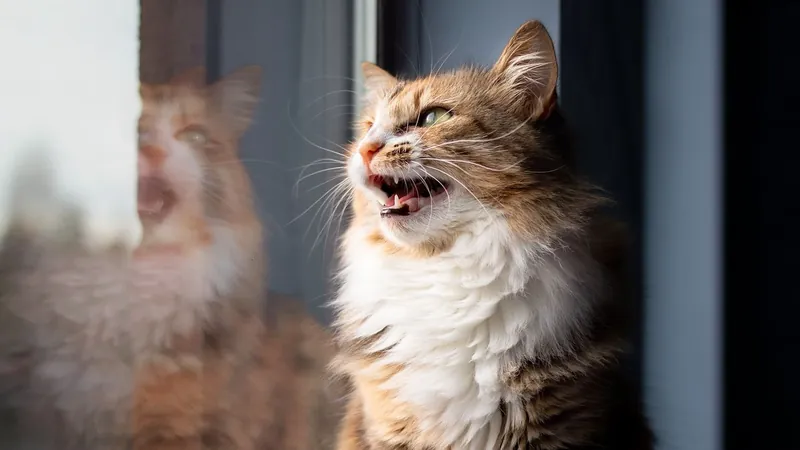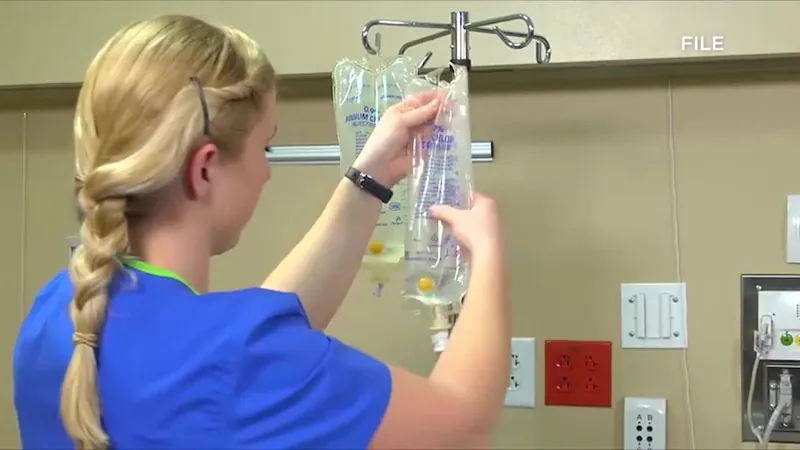
Unraveling the Mystery: Why Do Cats 'Chatter'?
2024-10-07
Author: Jia
Introduction
Cats are creatures of many sounds, each making its own statement—whether it’s a meow directed at you begging for food, an unsettling hiss indicating discomfort, or that intriguing chattering noise they occasionally produce while eyeing their prey. But what exactly triggers this peculiar behavior?
Expert Insight
Cat behaviorist Mikel Delgado shares insight, stating, "It’s quite challenging to pinpoint the exact reason behind this chattering. It doesn’t seem to be a form of communication with humans or other animals." Because of their independent nature, it's difficult for researchers to study cats in controlled environments, resulting in a gap in our understanding of this behavior. Nevertheless, cat enthusiasts and researchers have proposed several intriguing theories.
Expression of Frustration
One prevalent suggestion is that chattering could be an expression of frustration. Imagine seeing a bird outside your window, yet being unable to reach it—that might trigger a similar response in our feline friends. Delgado explains that chattering could be akin to a human's grumble or mumble when annoyed, suggesting a mix of emotions. This vocalization might not only arise out of irritation but could also represent excitement as well.
Challenges in Research
However, there remains a lack of scientific evidence supporting this theory, and setting up a study to explore it poses significant challenges. Researchers would need to determine the specific circumstances under which cats chatter and to observe their emotional reactions—a task that's notoriously complex.
Physiological Perspective
Another hypothesis that merits attention relates to the cat's physiology. Jonathan Losos, an evolutionary biologist from Washington University in St. Louis, suggests that cats might be opening their mouths to enhance their sense of smell. The vomeronasal organ, often referred to as Jacobson's organ, located on the roof of a cat's mouth, can help them identify scents beyond what their noses could perceive alone. By flapping their mouths, cats may be directing air toward this organ to gather more sensory information about their surroundings. However, like other theories, this one also demands further rigorous investigation.
Mimicry Theory
Among the more scientifically supported explanations is the idea of mimicry. Observations of the margay, a small wild cat species, reveal that it can imitate sounds made by its prey, such as small monkeys, to lure them. This behavior raises the possibility that domestic cats might use similar tactics by mimicking the chirps of birds—their typical prey.
Limitations of Current Research
Despite this intriguing possibility, there is scarce documentation about mimicking behavior across various wild cat species, making it difficult to derive conclusive results. Losos emphasizes that our understanding of cats' communication is hampered by a lack of knowledge about their wild relatives. “Most small cat species remain understudied, including the domestic cat's ancestor, the North African wildcat," he says. Understanding wildcats is crucial to determining whether these vocal behaviors are inherited or developed through domestication.
Conclusion
So, why do cats chatter? The answer is still shrouded in mystery. However, Delgado encourages cat owners to play a pivotal role in unraveling this enigma. Gathering information about the circumstances under which cats chatter—be it at a live animal or a toy, inside or outside the house—could provide significant insights that propel our understanding further.
In a world where our connection with pets grows ever more profound, exploring these intriguing behaviors not only opens the door to understanding cats better but also enhances the bond we share with them! Have you ever wondered what your cat is really trying to say when they chatter? Don’t miss the chance to observe them and contribute to the ongoing quest for answers.




 Brasil (PT)
Brasil (PT)
 Canada (EN)
Canada (EN)
 Chile (ES)
Chile (ES)
 España (ES)
España (ES)
 France (FR)
France (FR)
 Hong Kong (EN)
Hong Kong (EN)
 Italia (IT)
Italia (IT)
 日本 (JA)
日本 (JA)
 Magyarország (HU)
Magyarország (HU)
 Norge (NO)
Norge (NO)
 Polska (PL)
Polska (PL)
 Schweiz (DE)
Schweiz (DE)
 Singapore (EN)
Singapore (EN)
 Sverige (SV)
Sverige (SV)
 Suomi (FI)
Suomi (FI)
 Türkiye (TR)
Türkiye (TR)